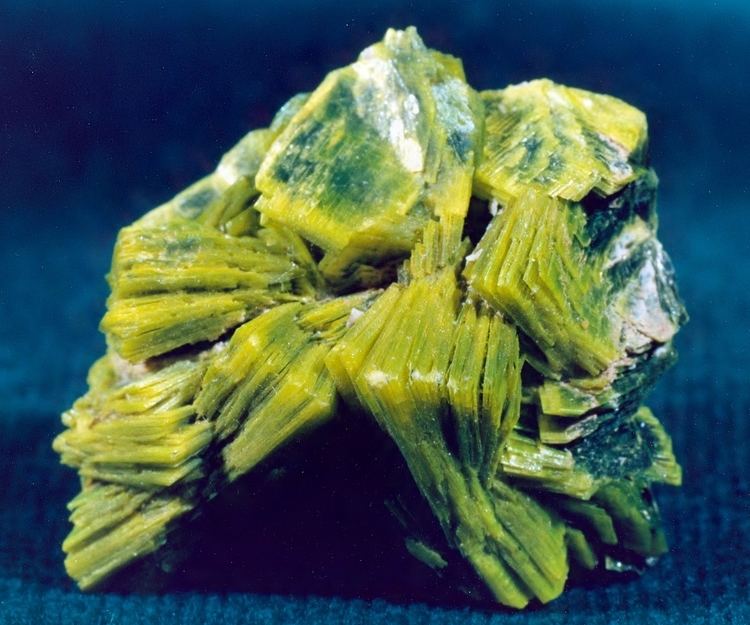Category Phosphate minerals | Strunz classification 8.EB.05 Space group Pnma | |
 | ||
Formula(repeating unit) Ca(UO2)2(PO4)2·10-12H2O Crystal class Dipyramidal (mmm)H-M symbol: (2/m 2/m 2/m) | ||
Autunite (hydrated calcium uranyl phosphate) with formula: Ca(UO2)2(PO4)2·10-12H2O is a yellow - greenish fluorescent mineral with a hardness of 2 - 2½. Autunite crystallizes in the orthorhombic system and often occurs as tabular square crystals. Due to the moderate uranium content of 48.27% it is radioactive and also used as uranium ore. If the mineral dries out, it converts to meta-autunite-I, which can turn into meta-autunite-II after heating. These two subsequent minerals are very rare in nature. For scientific studies it is recommended to store the mineral in a sealed container to minimize the water loss. Museums are known to have covered the mineral with lacquer to avoid drying of the mineral.
Autunite was discovered in 1852 near Autun, France. It occurs as an oxidation product of uranium minerals in granite pegmatites and hydrothermal deposits. Associate minerals include metaautunite, torbernite, phosphuranylite, saleeite, uranophane and sabugalite.
Mining
Some autunite is found near Mount Spokane, Washington. 90,000 lbs of U3O8 were produced from nine properties, although most of the ore came from the Daybreak Mine.
